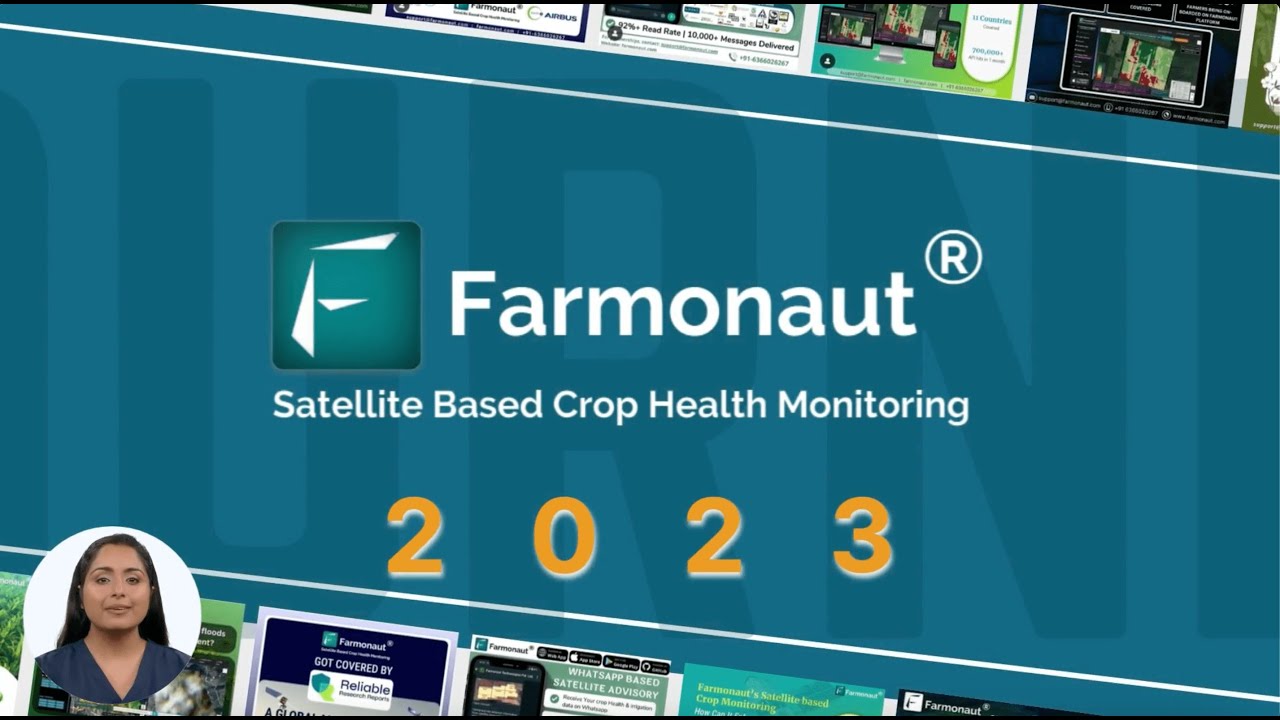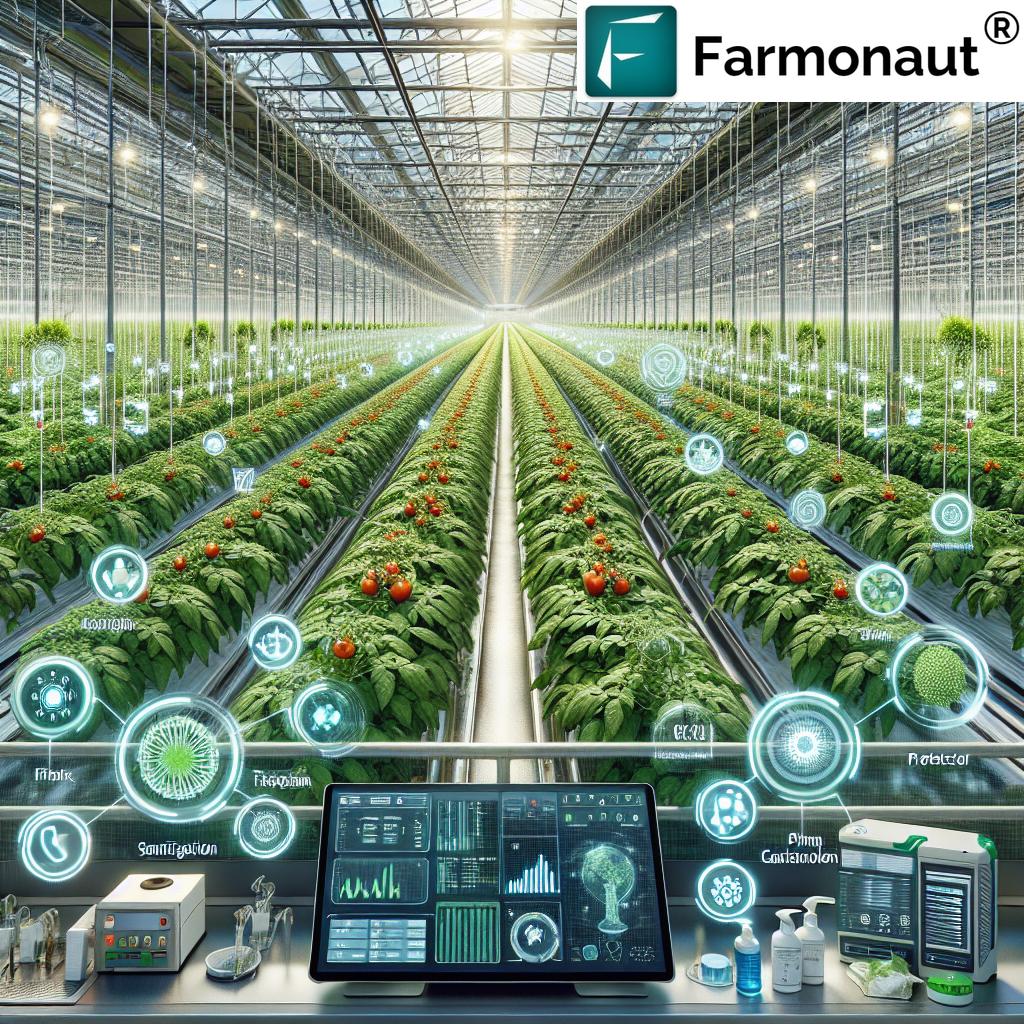Agtech Revolution: Exploring Australia’s Booming Startup Ecosystem and Investment Trends in Agricultural Innovation

“Global agtech startup funding reached $30 billion in 2020, a 35% increase from the previous year.”
Welcome to our comprehensive exploration of the thriving agtech landscape in Australia and beyond. As we delve into the world of agricultural technology innovation, we’ll uncover the exciting trends, investment opportunities, and groundbreaking solutions that are reshaping the future of farming. From precision agriculture to indoor farming, the agritech startup ecosystem is bursting with potential, and we’re here to guide you through this revolution.
The Rise of Agtech in Australia
Australia’s agricultural sector has long been a cornerstone of the nation’s economy, and now it’s at the forefront of technological innovation. The convergence of traditional farming practices with cutting-edge technology has given birth to a booming agtech industry that’s attracting global attention and significant investment.
- Rapid growth in agritech startup funding
- Government support for agricultural technology innovation
- Collaboration between farmers, researchers, and entrepreneurs
We’re witnessing a transformation that’s not just changing how farms operate but also creating new opportunities for rural entrepreneurs and tech-savvy agriculturists. The Australian agtech scene is characterized by its focus on sustainable practices, data-driven decision-making, and solutions tailored to the unique challenges of the Australian landscape.
Key Drivers of Agtech Innovation
Several factors are fueling the agtech revolution in Australia and globally:
- Climate Change Adaptation: Developing technologies to help farmers cope with changing weather patterns and extreme events.
- Food Security: Addressing the growing global demand for food through increased productivity and efficiency.
- Resource Optimization: Creating solutions for more efficient use of water, energy, and other inputs.
- Consumer Demands: Meeting the increasing consumer preference for transparency, sustainability, and traceability in food production.
These drivers have spurred innovation across various sectors of agriculture, from crop monitoring to livestock management. As a result, we’re seeing a diverse range of agtech startups emerging, each with unique solutions to age-old agricultural challenges.
Trends Shaping the Agtech Landscape
The agtech industry is evolving rapidly, with several key trends emerging:
- Precision Agriculture: Utilizing data analytics and IoT devices to optimize farming practices.
- Vertical and Indoor Farming: Developing controlled environment agriculture solutions for urban areas.
- Robotics and Automation: Introducing AI-powered machinery to increase efficiency and reduce labor costs.
- Biotechnology: Enhancing crop resilience and nutrition through genetic research and modification.
- Blockchain in Agriculture: Improving supply chain transparency and traceability.
These trends are not just shaping the future of farming; they’re also creating exciting investment opportunities in the agtech sector.
Investment Landscape in Australian Agtech
The investment scene in Australian agtech is vibrant and growing. Venture capital firms, angel investors, and even traditional agricultural businesses are pouring funds into promising startups. Here’s what we’re seeing:
- Increased funding rounds for early-stage agtech companies
- Establishment of dedicated agtech venture capital funds
- Corporate investment from large agribusinesses looking to innovate
- Government grants and incentives to boost agtech development
This influx of capital is accelerating the pace of innovation and helping Australian agtech startups scale their operations both domestically and internationally.
Spotlight on Australian Agtech Startups
Australia’s agtech ecosystem is home to a diverse array of innovative startups. While we don’t mention specific companies, it’s worth noting the types of solutions being developed:
- Drone technology for crop monitoring and spraying
- AI-powered farm management platforms
- Soil health monitoring systems
- Livestock tracking and welfare solutions
- Water management and irrigation optimization tools
These startups are not only addressing local agricultural challenges but are also creating solutions with global appeal.
The Role of Accelerators and Incubators
Accelerator programs play a crucial role in nurturing agtech startups. In Australia, we’re seeing a growing number of accelerators focused specifically on agricultural innovation. These programs offer:
- Mentorship from industry experts
- Access to funding and investor networks
- Collaboration opportunities with established agribusinesses
- Resources for product development and market testing
By providing these resources, accelerators are helping to bridge the gap between innovative ideas and market-ready solutions.
Global Perspective: Australia in the World Agtech Scene
While Australia is making significant strides in agtech, it’s important to consider its position in the global context. Let’s take a look at how Australian agtech compares to other major players:
| Region | Top Agtech Sectors | Estimated Investment (USD) | Notable Startups | Key Technologies |
|---|---|---|---|---|
| North America | Precision agriculture, Indoor farming | $10-15 billion | Various innovative companies | AI, IoT, Robotics |
| Europe | Vertical farming, Biotech | $5-7 billion | Multiple emerging players | IoT, Blockchain, AI |
| Asia-Pacific | Smart irrigation, Crop monitoring | $3-5 billion | Diverse startup ecosystem | Drones, AI, Sensors |
| Latin America | Precision agriculture, Livestock tech | $1-2 billion | Growing number of startups | IoT, Data analytics |
| Australia | Water management, Crop health | $1-1.5 billion | Innovative local companies | Satellite imagery, AI, IoT |
This comparison shows that while Australia may not lead in terms of total investment, it’s punching above its weight in terms of innovation and sector-specific solutions, particularly in areas like water management and crop health monitoring.
Challenges and Opportunities in Australian Agtech
Despite the positive momentum, the Australian agtech sector faces several challenges:
- Limited domestic market size compared to other global players
- Geographic isolation from major tech hubs
- Adoption barriers among traditional farmers
- Need for more specialized talent in agtech fields
However, these challenges also present opportunities:
- Developing solutions with global applicability from day one
- Leveraging Australia’s strong agricultural reputation
- Creating education programs to nurture agtech talent
- Fostering closer collaboration between tech innovators and farmers
“Australia’s agtech sector is projected to be worth $100 billion by 2030, creating over 200,000 new jobs.”
This projection underscores the immense potential of the agtech industry in Australia, not just for economic growth but also for job creation and rural development.
The Role of Government in Fostering Agtech Innovation
The Australian government has recognized the importance of agtech in maintaining the country’s agricultural competitiveness. We’re seeing increased support through:
- Research and development grants
- Tax incentives for agtech investments
- Establishment of agtech innovation hubs
- Policies to improve rural connectivity and digital infrastructure
These initiatives are crucial in creating an environment where agtech startups can thrive and scale their innovations.
Explore Farmonaut’s API for advanced agtech solutions
Sustainable Agtech: A Focus on Environmental Impact
Sustainability is at the heart of many agtech innovations in Australia. We’re seeing a strong emphasis on:
- Water-efficient irrigation systems
- Renewable energy solutions for farms
- Precision agriculture to reduce chemical use
- Carbon sequestration technologies
These sustainable agtech trends not only address environmental concerns but also offer long-term cost savings for farmers, making them attractive for both investors and end-users.
Digital Agriculture Platforms: Connecting the Ecosystem
Digital platforms are playing a pivotal role in the agtech revolution. These platforms offer:
- Data integration from various farm sensors and devices
- AI-powered insights for decision-making
- Marketplaces connecting farmers with suppliers and buyers
- Community features for knowledge sharing
By creating these digital ecosystems, agtech startups are not just providing individual solutions but are transforming entire agricultural value chains.
The Future of Agtech: Emerging Technologies
Looking ahead, several emerging technologies are set to further revolutionize agriculture:
- 5G and Edge Computing: Enabling real-time data processing on farms
- Autonomous Vehicles: Self-driving tractors and harvesters
- Advanced Sensors: Micro-sensors for soil and plant health monitoring
- CRISPR and Gene Editing: Developing more resilient and nutritious crops
These technologies promise to make farming more precise, efficient, and sustainable than ever before.
Global Collaboration in Agtech
While we focus on Australia’s agtech scene, it’s important to note the increasing global collaboration in this space. We’re seeing:
- International partnerships between agtech startups
- Cross-border investment in promising technologies
- Global accelerator programs fostering innovation across continents
- Shared research initiatives addressing global agricultural challenges
This global approach is crucial for tackling the world’s food security and sustainability challenges.
The Impact of Agtech on Rural Communities
The agtech revolution isn’t just about technology; it’s also transforming rural communities. We’re observing:
- Creation of high-skilled jobs in rural areas
- Improved farm profitability through efficiency gains
- Enhanced connectivity and digital literacy in farming communities
- Attraction of young talent back to agricultural regions
These impacts are revitalizing rural economies and making agriculture an attractive career path for the next generation.
Funding Strategies for Agtech Startups
For entrepreneurs in the agtech space, understanding funding options is crucial. Here are some strategies we’ve seen successful startups employ:
- Bootstrapping in the early stages to prove concept
- Seeking government grants for research and development
- Participating in agtech-focused accelerator programs
- Engaging with angel investors who have agricultural expertise
- Pursuing venture capital for scaling operations
The key is to align funding strategy with the startup’s stage of development and growth plans.
The Role of Data in Agtech Innovation
Data is the lifeblood of many agtech innovations. We’re seeing its impact in various ways:
- Predictive analytics for crop yield forecasting
- Machine learning algorithms for pest and disease detection
- Big data analysis for optimizing supply chains
- Weather data integration for precision farming
The ability to collect, analyze, and act on data is giving farmers unprecedented control over their operations.
Agtech and Food Security
One of the most significant impacts of agtech is on global food security. Innovations in this space are:
- Increasing crop yields in challenging environments
- Reducing food waste through improved supply chain management
- Enhancing food safety through traceability solutions
- Developing alternative protein sources to meet growing demand
These advancements are crucial in ensuring a sustainable food supply for the world’s growing population.
The Intersection of Agtech and Foodtech
The lines between agtech and foodtech are increasingly blurring. We’re seeing exciting developments at this intersection:
- Cellular agriculture for lab-grown meat
- Personalized nutrition based on genetic data
- Smart packaging for extended shelf life
- Direct-to-consumer platforms connecting farmers and consumers
This convergence is creating new opportunities for innovation and investment in the broader food and agriculture sector.
Agtech Education and Skill Development
As the agtech sector grows, so does the need for specialized skills. We’re seeing developments in:
- University programs focused on agricultural technology
- Online courses and certifications in agtech-related fields
- Internship programs connecting students with agtech startups
- Continuing education for farmers on new technologies
These educational initiatives are crucial for building the workforce needed to drive agtech innovation forward.
The Role of Farmonaut in the Agtech Ecosystem
In the dynamic world of agtech, Farmonaut stands out as a pioneer in satellite-based farm management solutions. Our platform integrates advanced technologies to make precision agriculture accessible and affordable for farmers worldwide. Here’s how Farmonaut is contributing to the agtech revolution:
- Satellite-Based Crop Monitoring: We provide real-time insights into crop health, helping farmers make informed decisions about irrigation, fertilization, and pest management.
- AI-Powered Advisory: Our Jeevn AI system delivers personalized recommendations, enhancing farm productivity and efficiency.
- Blockchain Traceability: We offer solutions for transparent and secure supply chain management in agriculture.
- Resource Optimization: Our tools help agribusinesses manage their resources more effectively, reducing costs and environmental impact.
By leveraging these technologies, Farmonaut is empowering farmers and agribusinesses to embrace the future of agriculture, aligning with the broader trends we’re seeing in the Australian and global agtech landscapes.
Conclusion: The Future of Agtech in Australia and Beyond
As we’ve explored throughout this article, the agtech revolution is in full swing, with Australia playing a significant role on the global stage. The convergence of technological innovation, investment interest, and pressing agricultural challenges is creating a perfect storm for agtech growth.
Key takeaways include:
- The rapid growth of agtech startups and investment in Australia
- The critical role of government support and accelerator programs
- The focus on sustainable and data-driven agricultural solutions
- The potential for global impact and collaboration in agtech innovation
As we look to the future, it’s clear that agtech will continue to play a crucial role in shaping the future of agriculture, food production, and rural economies. For entrepreneurs, investors, and industry professionals, the opportunities in this space are vast and varied.
We encourage our readers to stay informed about the latest developments in agtech, consider the potential applications in their own work, and explore ways to engage with this exciting and rapidly evolving sector.
FAQ Section
Q: What is agtech?
A: Agtech, short for agricultural technology, refers to the use of technology in agriculture, horticulture, and aquaculture with the aim of improving yield, efficiency, and profitability.
Q: How is agtech changing traditional farming?
A: Agtech is revolutionizing farming through precision agriculture, automation, data analytics, and sustainable practices, allowing farmers to make more informed decisions and optimize their operations.
Q: What are some key areas of agtech innovation?
A: Key areas include precision agriculture, indoor farming, robotics, AI and machine learning, biotechnology, and blockchain for supply chain management.
Q: How can farmers benefit from agtech solutions?
A: Farmers can benefit through increased crop yields, reduced input costs, improved resource management, better decision-making based on data insights, and enhanced sustainability of their operations.
Q: What role does venture capital play in agtech?
A: Venture capital is crucial in funding agtech startups, providing the necessary capital for research, development, and scaling of innovative agricultural technologies.
Q: How is Australia positioned in the global agtech landscape?
A: Australia is emerging as a significant player in agtech, leveraging its strong agricultural sector and innovative startup ecosystem to develop solutions with global applicability.
Q: What are the main challenges facing agtech adoption?
A: Challenges include resistance to change among traditional farmers, high initial costs of some technologies, lack of digital infrastructure in rural areas, and the need for specialized skills and training.
Q: How is agtech addressing environmental concerns in agriculture?
A: Agtech is developing solutions for sustainable farming practices, including water conservation, reduced chemical use, carbon sequestration, and renewable energy integration in agricultural operations.
Q: What opportunities exist for entrepreneurs in the agtech space?
A: Entrepreneurs can explore opportunities in developing new farming technologies, creating data analytics platforms, innovating in sustainable agriculture solutions, and addressing specific regional agricultural challenges.
Q: How can I stay updated on agtech trends and opportunities?
A: Stay informed by following industry publications, attending agtech conferences and webinars, engaging with agricultural research institutions, and connecting with agtech startups and investors.





















